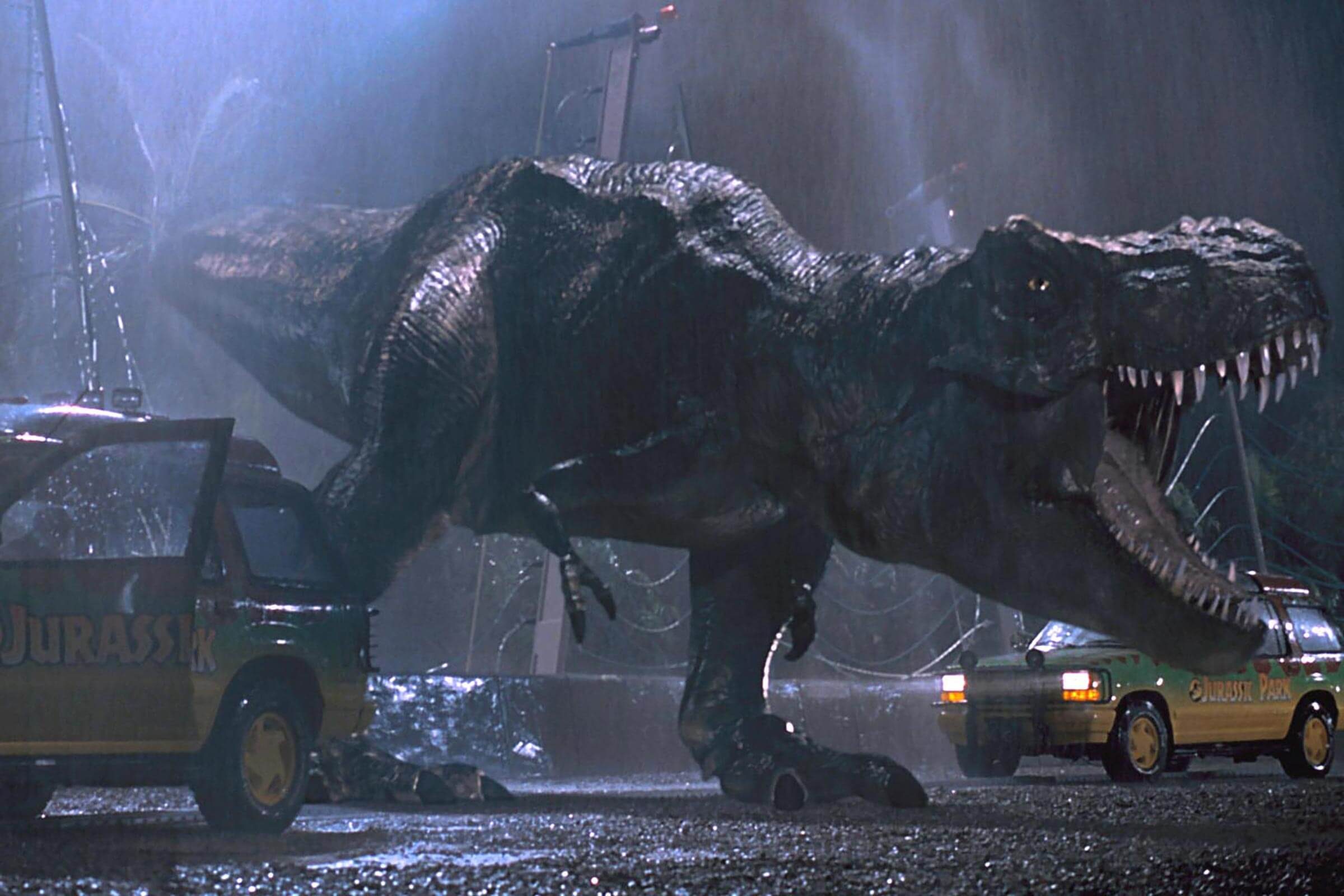Paleontologists believe that the real T. rex sound was nothing like the roar you hear in the movies. But it's still terrifying!

The Real T. Rex Sound Is More Unsettling Than You Think

Thanks to the Jurassic film saga, the dangerous Tyrannosaurus rex has been generating a wave of fear on the big screen for decades. And this summer’s Jurassic World Rebirth doesn’t skimp on the scares. With deadly looks and one heck of a bite, the T. Rex was one of the biggest and baddest villains of all dinosaurs. When the prehistoric predator unleashes its earth-shaking roar, you know somebody onscreen is in for a bad time (and it’s probably not the dinosaur). But Hollywood magic aside, paleontologists now believe the real T. rex sound was completely different.
That’s right: T. rexes sounded nothing like the movies. Read on to find out what this dangerous predator really sounded like when it existed millions of years ago. Warning: It may still send shivers down your spine!
Get Reader’s Digest’s Read Up newsletter for more trivia, humor, tech and pets all week long.
The real T. rex sound wasn’t a roar
Since the T. rex is one of the most famous predators to ever live, film sound designers naturally gave it a classic “predatory” roar. But experts know that the T. rex and its fellow dinosaurs weren’t closely related to predatory mammals—like lions, bears and wolves—that make roaring sounds today. Dinosaurs are much more closely related to reptiles and birds.
New experiment recreates real T. rex sound
Armed with this knowledge of the dinosaur family, Julia Clarke, a paleontology professor at the University of Texas, decided to create a more accurate depiction of the real T. rex sound—something akin to what it probably made and would make today if the dinosaur was still alive. Since crocodiles are close modern-day relatives of the T. rex, Clarke used the throaty sound of the Chinese alligator. She also used the distinct, almost musical booming sound of the bittern, a Eurasian wading bird. Then, she scaled up the sound to correspond with the T. rex‘s massive size.
The real T. rex sound that this experiment produced is a deep, low thrumming. BBC naturalist Chris Packham commented that you can feel the noise, the way you feel loud bass notes vibrating in your car. It was probably audible from miles away.
Unfortunately (or maybe fortunately?), we can’t know what the T. rex actually sounded like since it’s been extinct for millions of years. This sound is just an educated guess from some very educated people.
What the T. rex really sounded like
There’s no denying that, though it lacks the bravado of a roar manufactured in a Hollywood studio, the real T. rex sound is haunting and ominous. It’s less of a booming cinematic roar than a sinister sound of something massive (and dangerous) approaching. Remember the famous water cup scene in the original 1993 Jurassic Park movie? This sound produces the same slowly creeping, hair-standing-on-end sense of horror.
We’ll leave it up to you to decide which sound is scarier.
Why trust us
At Reader’s Digest, we’re committed to producing high-quality content by writers with expertise and experience in their field in consultation with relevant, qualified experts. We rely on reputable primary sources, including government and professional organizations and academic institutions as well as our writers’ personal experiences where appropriate. We verify all facts and data, back them with credible sourcing and revisit them over time to ensure they remain accurate and up to date. Read more about our team, our contributors and our editorial policies
Sources:
- Yahoo Entertainment: “What Happened to Rexy the T-Rex in Jurassic World Rebirth?”
- YouTube: “Chinese alligator bellowing”
- YouTube: “Booming Bitterns 17 April 2017”
- The Telegraph: “Sinister sound of Tyrannosaurus Rex heard for first time in 66 million years”
- YouTube: “The sinister sound of a Tyrannosaurus”
- YouTube: “Jurassic Park 1- T Rex Entrance.flv”























